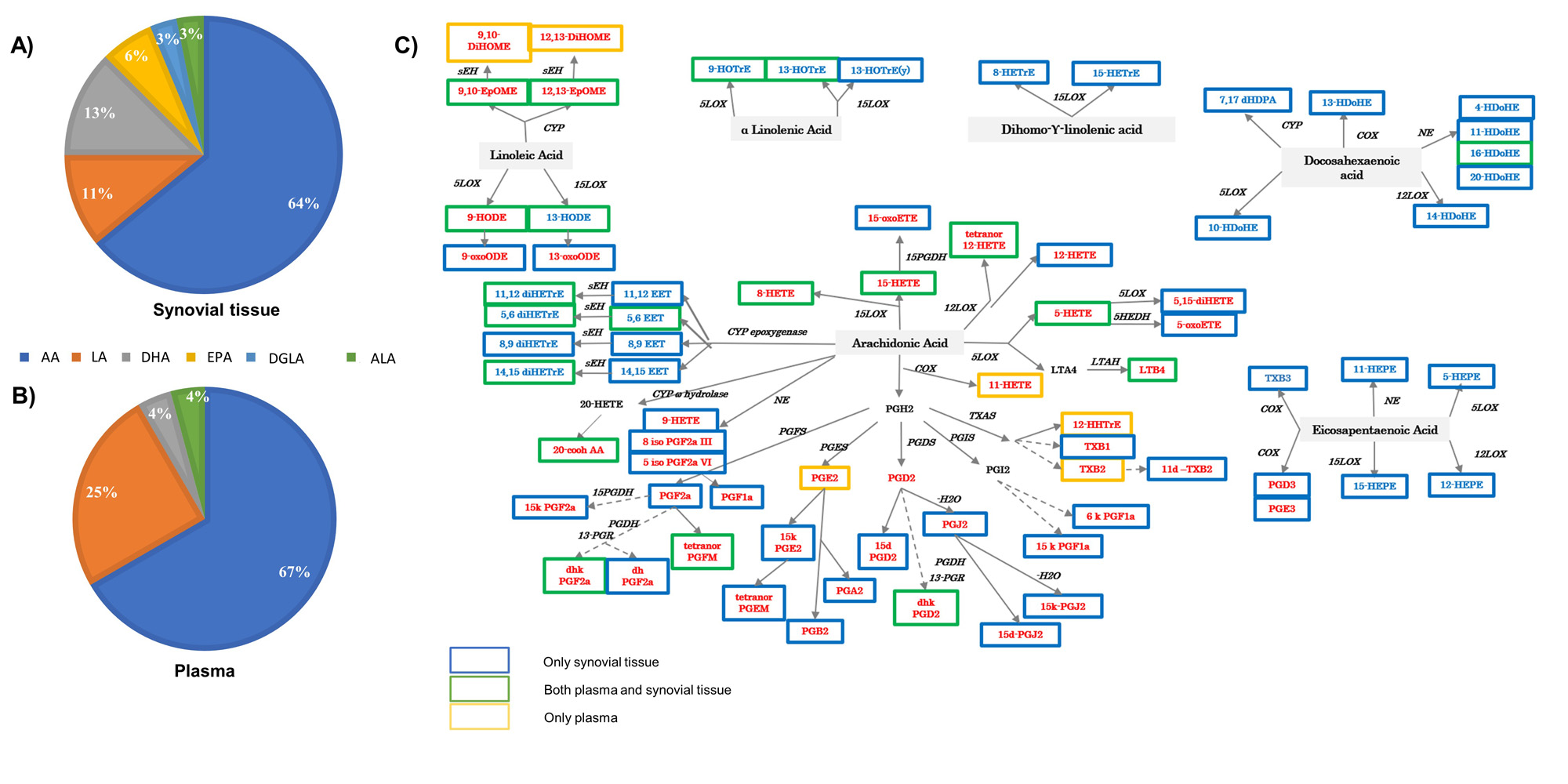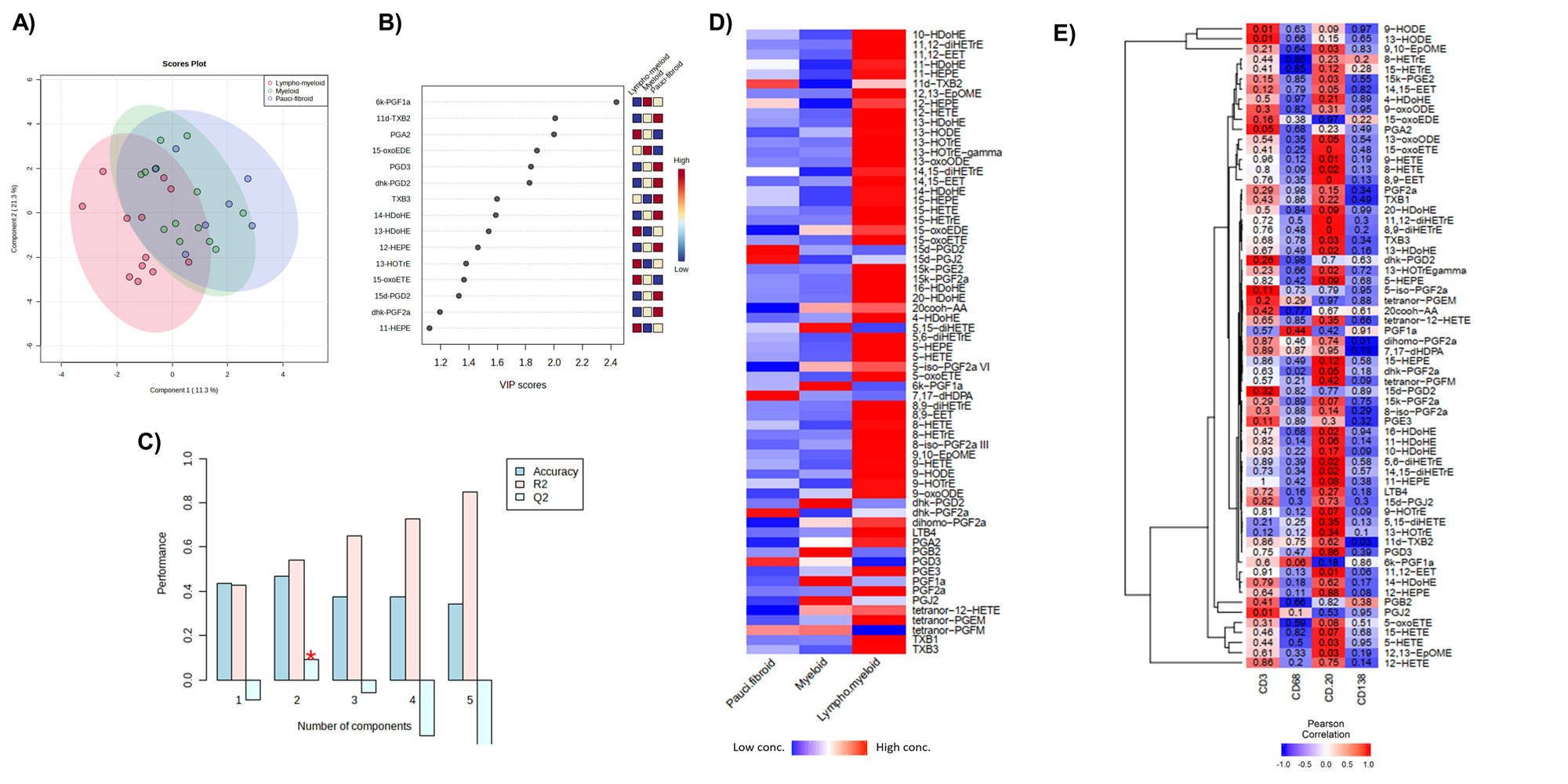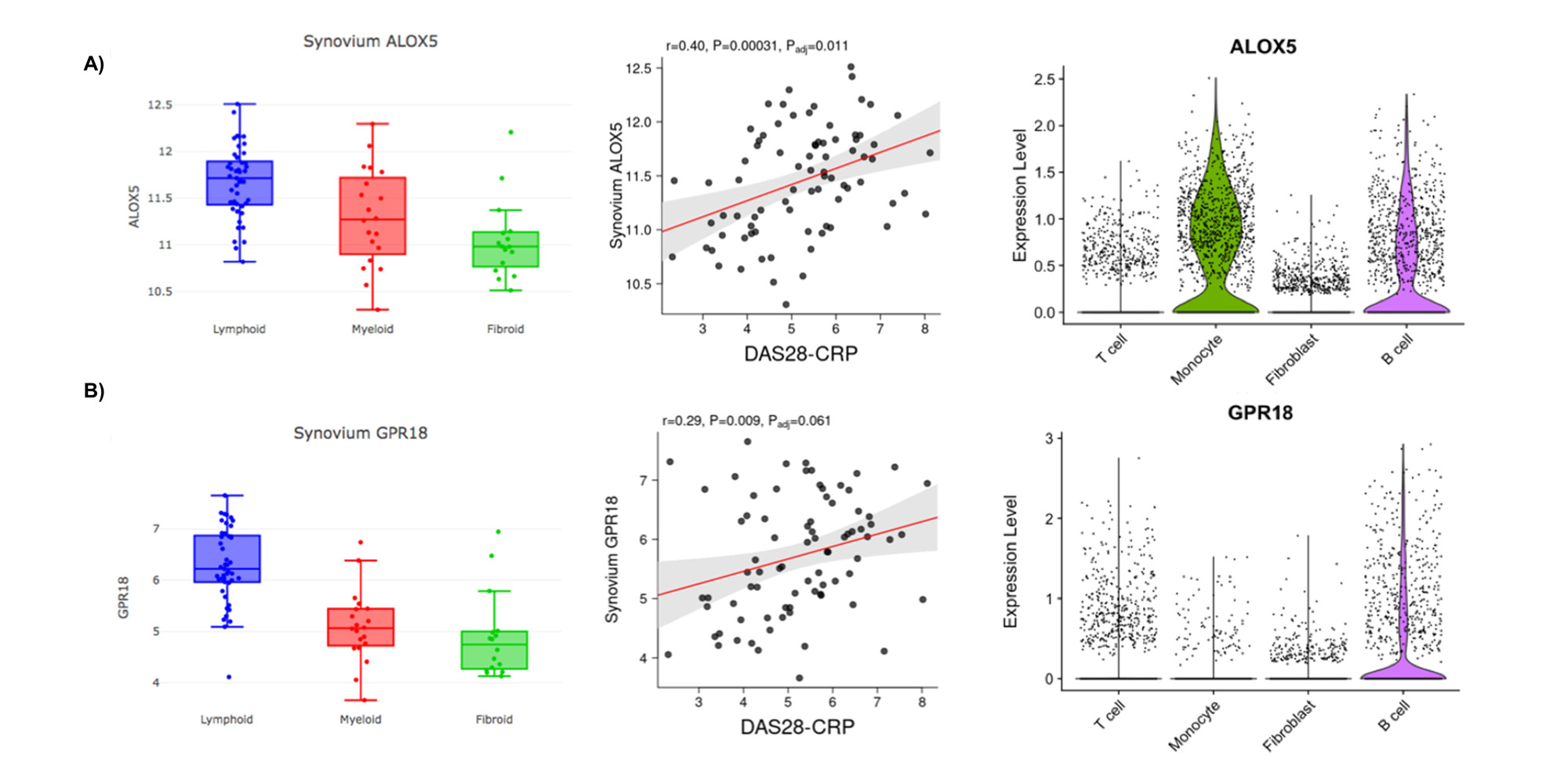Session Information
Date: Monday, November 13, 2023
Title: (0859–0885) Osteoarthritis & Joint Biology – Basic Science Poster
Session Type: Poster Session B
Session Time: 9:00AM-11:00AM
Background/Purpose: Oxylipins are bioactive lipids derived from polyunsaturated fatty acids (PUFAs) that modulate inflammation and may remain overexpressed in refractory synovitis. These mediators in plasma could also be biomarkers of synovial pathology. The aim of this study is to determine synovial oxylipins in active inflamed joints and their correlation with plasma oxylipins.
Methods: Patients with established rheumatoid or psoriatic arthritis with active disease despite treatment were recruited and paired synovial tissue (ST) and plasma were collected. Oxylipins were determined by liquid chromatography with tandem mass spectrometry and were classified into groups according to their PUFA precursor and enzyme. The expression of CD20, CD68, CD3 and CD138 were obtained to describe synovial histology. Cell specific expressions of oxylipin-related genes were identified by examining available synovial scRNA-seq data.
Results: We included a total of 32 ST and 26 paired-plasma samples. A total of 64 oxylipins were identified in ST but only 28 were identified in plasma (Figure 1). Only levels of 11,12-di-HETrE, 15-HETE, 16-HDoHE and tetranor-PGFM had a statistically significant positive correlation between plasma and ST. Multivariate approaches were conducted to capture the global picture of oxylipins disturbances according to the histological classification. Although PLS-DA with the identified metabolites in the tissue showed some overlap between the 3 groups (Figure 2A),6k-PGF1a, 11d-TXB2 and PGA2 were the most important metabolites in component 2 to discriminate between the three groups with a VIP score >2 (Figure 2B). This component showed a positive predictive ability to separate the three phenotypes with an accuracy= 0.47, R2= 0.54 and Q2= 0.09 (Figure 2C). We found higher concentration of several oxylipins in the lymphoid-myeloid phenotype (Figure 2D) which a positive correlation with CD3 and CD20 semiquantification (Figure 2E). Several oxylipins and oxylipin-related genes were differentially expressed among synovial phenotypes. Specifically, several 5-LOX-derived oxylipins were statistically elevated in lympho-myeloid phenotype and associated with B cells expression (Figure 3).
Conclusion: The lack of correlation between synovial tissue and plasma oxylipins suggests that synovial lipid profiling better characterizes active pathways in treated joints. Synovial 5-LOX-derived oxylipins were more highly expressed in B cell-enriched synovium, thus combination therapy with 5-LOX inhibitors to improve refractory inflammation may be needed in patients with this histological group.
To cite this abstract in AMA style:
Murillo-Saich J, Coras R, Ramirez Garcia F, Quesada-Masachs E, Sala Climent M, Eschelbach K, Mahony C, Celis R, Armando A, Quehenberger O, Croft A, Kavanaugh A, Chang E, Canete J, Singh A, Guma M. Synovial 5-LOX-Derived Oxylipins Define a B Cell-Enriched Synovium [abstract]. Arthritis Rheumatol. 2023; 75 (suppl 9). https://acrabstracts.org/abstract/synovial-5-lox-derived-oxylipins-define-a-b-cell-enriched-synovium/. Accessed .« Back to ACR Convergence 2023
ACR Meeting Abstracts - https://acrabstracts.org/abstract/synovial-5-lox-derived-oxylipins-define-a-b-cell-enriched-synovium/



